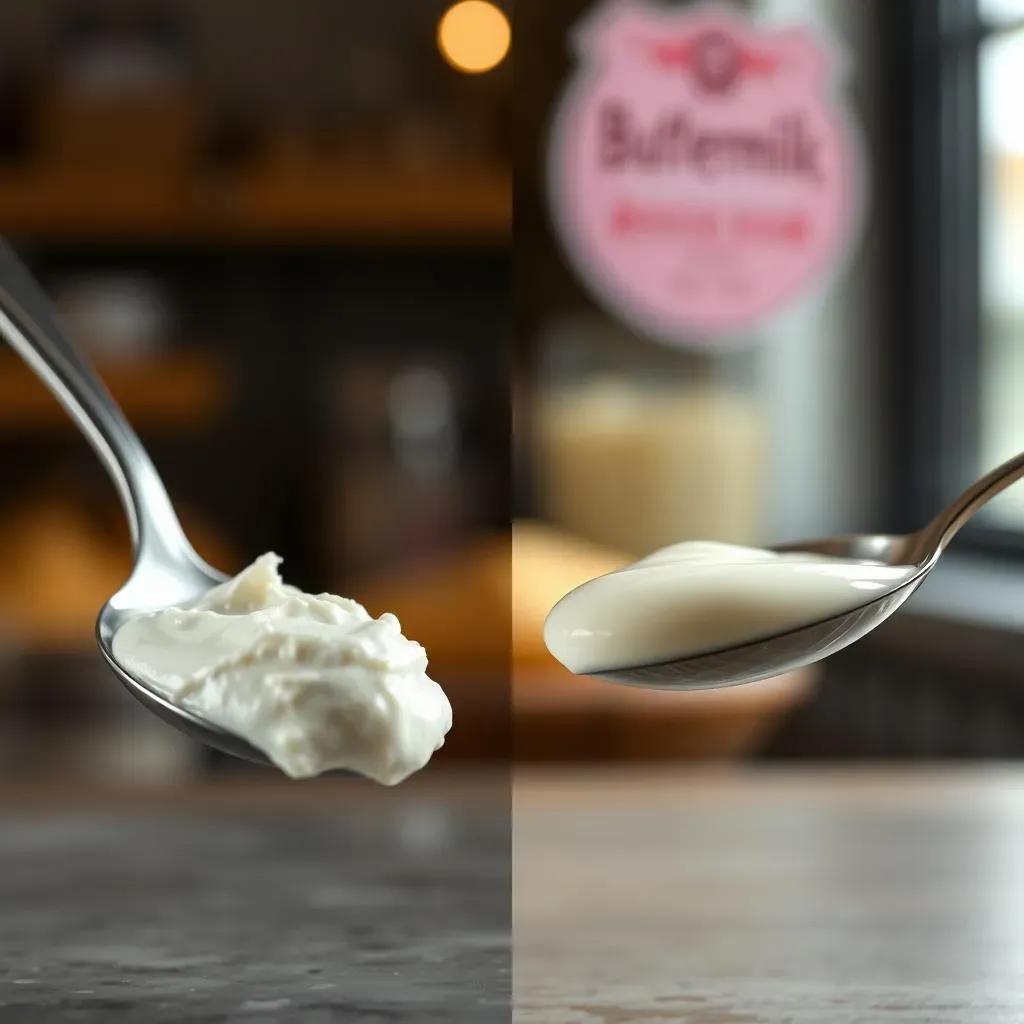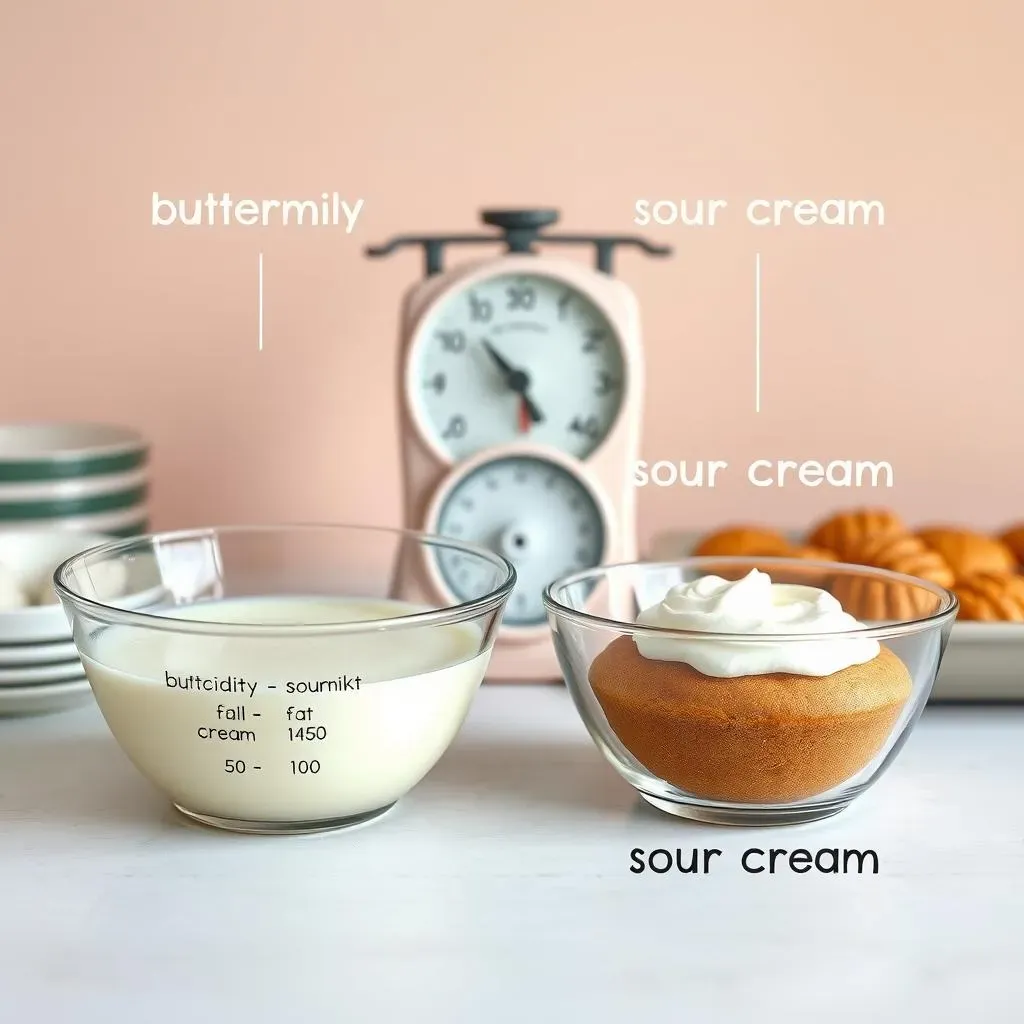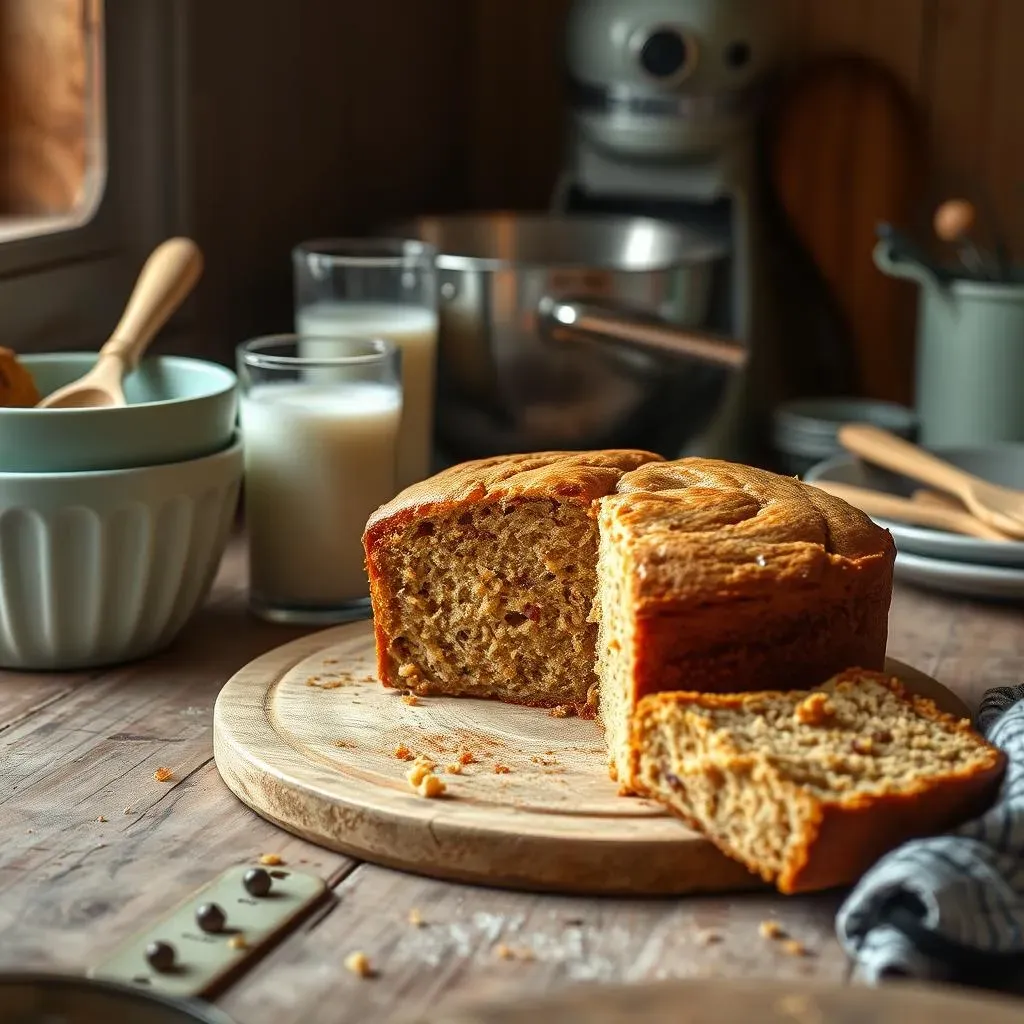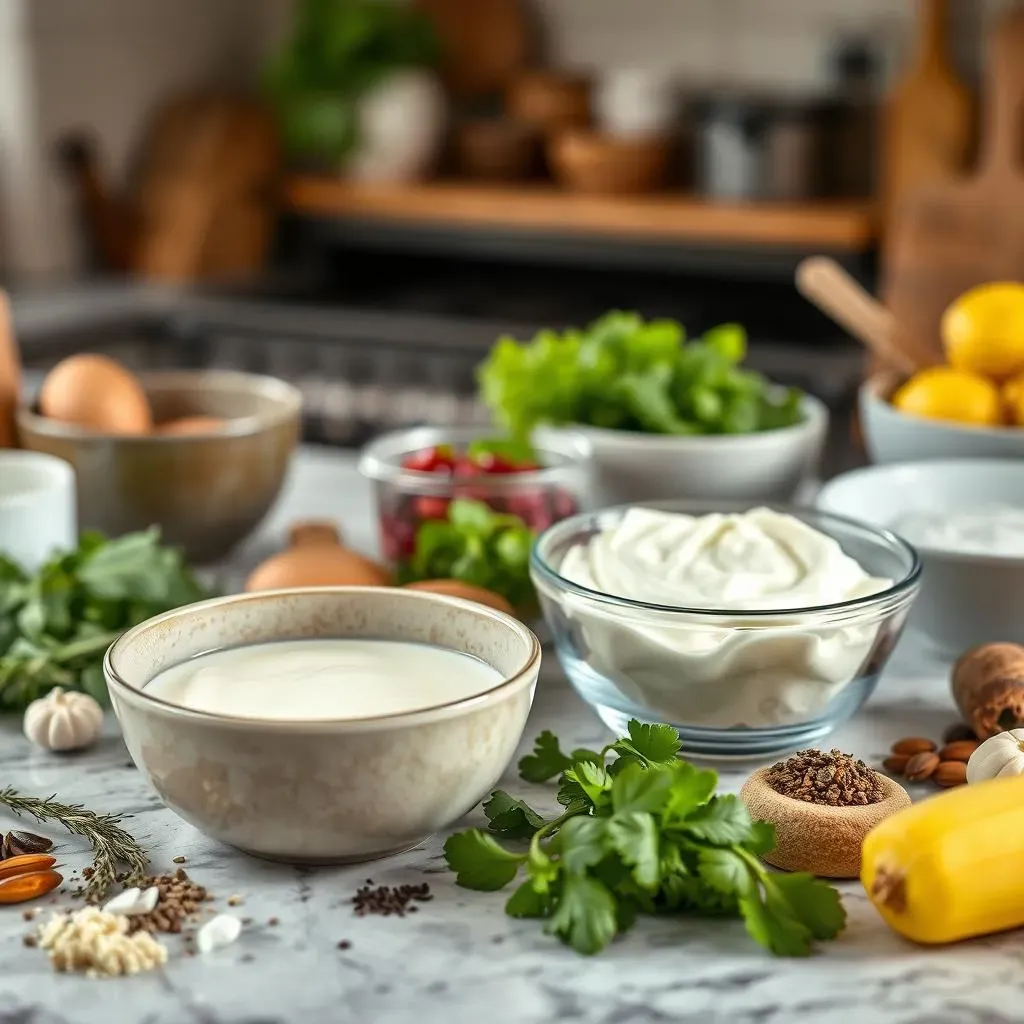Table of Contents
Ever stared blankly at a recipe, needing buttermilk but only finding sour cream in your fridge? We've all been there! The question, "can sour cream be substituted for buttermilk?", plagues bakers everywhere. This article dives headfirst into that creamy conundrum. We'll explore the subtle yet significant differences between these two dairy delights, comparing their textures, acidity levels, and overall impact on your baked goods. Get ready to understand the science behind the swap, uncovering when a simple substitution works wonders and when it might lead to a culinary catastrophe. We'll even share some recipe ideas and real-world results, showing you exactly how sour cream performs as a buttermilk stand-in. Beyond baking, we’ll explore other creative uses for both ingredients. So, whether you're a seasoned baker or a kitchen novice, buckle up for a delicious journey into the world of sour cream and buttermilk substitutions. Let's get started!
Sour Cream vs. Buttermilk: A Taste Test

Sour Cream vs. Buttermilk: A Taste Test
Texture and Thickness
Let's talk texture! Buttermilk, a byproduct of butter-making, has a slightly thinner consistency than sour cream. Think of it like a watery yogurt. Sour cream, on the other hand, is thicker and creamier, almost like a fluffy cloud in a bowl. This difference in thickness can significantly impact how your baked goods turn out. In cakes, for example, buttermilk contributes to a tender crumb, while sour cream can add richness and moisture. But which one is *better*? That depends entirely on your recipe and desired outcome!
Speaking of recipes, if you're trying to substitute sour cream for buttermilk in a recipe calling for a lighter texture, you might need to thin it out a bit. Adding a splash of milk or water can help achieve the desired consistency. Don't just go willy-nilly, though; start with a small amount and adjust as needed. A little goes a long way!
Ingredient | Texture | Typical Use |
|---|---|---|
Buttermilk | Thin, slightly watery | Cakes, biscuits, pancakes |
Sour Cream | Thick, creamy | Frostings, dips, dressings |
Taste and Acidity
Now, let's talk taste. Buttermilk has a tangy, slightly acidic flavor. Think of it as a milder version of yogurt. Sour cream, while also slightly acidic, has a richer, creamier taste. This difference in flavor can be subtle but noticeable, especially in recipes where the dairy is a prominent ingredient. For example, in a creamy soup, the subtle tang of buttermilk might be preferable to the heavier richness of sour cream. Conversely, in a rich and decadent dessert, sour cream's creaminess might be more appropriate.
Remember that the acidity of both buttermilk and sour cream plays a crucial role in baking. The acid reacts with baking soda or powder, creating those lovely little air pockets that give your baked goods their light and fluffy texture. Substituting sour cream for buttermilk might slightly alter the final product's rise and texture, but often the difference is negligible, especially in recipes that already have a fair amount of other ingredients.
Want to learn more about substituting other ingredients for sour cream? Check out our guide on substituting yogurt for sour cream!
- Buttermilk: Tangy, slightly acidic
- Sour Cream: Rich, creamy, slightly acidic
The Science Behind the Swap: Acidity and Fat

The Science Behind the Swap: Acidity and Fat
So, you're curious about the chemistry of sour cream versus buttermilk? Think of it like this: both are acidic, meaning they contain acids that react with baking soda or powder, creating carbon dioxide bubbles. These bubbles are what give baked goods that lovely airy texture. Buttermilk's acidity comes naturally from the fermentation process, while sour cream's is a bit more controlled. The fat content is another key player. Buttermilk is relatively low in fat, whereas sour cream is famously rich and creamy. This fat content affects moisture and richness in your final product. A high-fat content, like in sour cream, can lead to a moister, denser cake, while buttermilk creates a lighter, fluffier result. It's a delicate balance of acid and fat!
The amount of acid and fat significantly impacts how your cake or bread rises. Too much acid can result in a slightly bitter taste and a less fluffy texture. Too little acid, and your baking soda might not react properly, leading to a flat, dense final product. The fat content contributes to the final product’s moisture and richness. If you’re substituting sour cream for buttermilk, you need to consider the differences in both fat and acid content to create a balanced recipe. Remember, a little experimentation will help you find what works best!
Ingredient | Acidity Level | Fat Content |
|---|---|---|
Buttermilk | High (naturally occurring) | Low |
Sour Cream | Moderate (added) | High |
Let's not forget that different recipes call for different things. Some recipes are more forgiving than others, and some recipes are specifically designed to use buttermilk for its specific properties. If you're baking something delicate, like angel food cake, substituting sour cream could drastically alter the outcome. You might have to adjust other ingredients to compensate. For instance, reducing the amount of baking powder might help balance the increased fat content from the sour cream.
Need more info on making substitutions? Check out our guide on substituting sour cream for cream cheese!
- Consider the recipe's sensitivity to changes in acidity and fat.
- Adjust other ingredients as needed to compensate for differences.
- Experiment and have fun!
Baking with Sour Cream Instead of Buttermilk: Recipes and Results

Baking with Sour Cream Instead of Buttermilk: Recipes and Results
Cakes and Muffins: A Sweet Success?
Let's start with cakes and muffins. These are often considered the ultimate test for buttermilk substitutes, as the texture is crucial. Many recipes call for buttermilk's tang and airy texture. When swapping in sour cream, you'll notice a slightly denser, richer crumb. The cake might be a tad more moist, too. It's not a bad thing, necessarily! Think of it as a trade-off: you lose a bit of fluffiness but gain in richness and moisture. In some cases, this can be a delicious improvement! For example, in a chocolate cake, the added richness of sour cream can complement the chocolate flavor beautifully. However, if you're aiming for a light and airy sponge cake, buttermilk might be the better choice. It all depends on your personal preference.
I’ve had success substituting sour cream in recipes like banana bread and carrot cake. The added moisture from the sour cream creates a wonderfully moist and flavorful result. However, I'd recommend starting with a recipe that's already quite forgiving, like a simple pound cake, before tackling more delicate recipes. Remember, you can always adjust the amount of baking powder or soda to compensate for the increased fat content of the sour cream. Experimentation is key!
- Start with forgiving recipes like pound cake.
- Adjust leavening agents as needed.
- Embrace the richer, moister crumb.
Bread and Quick Breads: A Different Story
Now, let’s talk about bread and quick breads. These recipes often rely on buttermilk's unique properties to create a tender crumb and a slightly tangy flavor. Substituting sour cream can significantly impact the final product’s texture and taste. The increased fat content can make the bread denser and potentially less fluffy. The richer flavor of sour cream might also clash with the flavors of certain breads, especially those with delicate or subtly sweet flavors. While it's not impossible to substitute sour cream in bread recipes, it's generally recommended to stick with buttermilk for optimal results. If you really want to experiment, you might need to reduce the amount of other fats in the recipe to compensate for the sour cream's high fat content.
For instance, if a recipe calls for both butter and buttermilk, you might consider reducing the amount of butter used when substituting sour cream for the buttermilk. This will help to prevent the bread from becoming overly dense. Remember, though, that even with adjustments, the final product might not be exactly the same as when using buttermilk. If you're seeking that authentic buttermilk flavor and texture in your bread, it's generally best to stick with the original recipe. For more information on other dairy substitutions, check out our comprehensive guide on substituting sour cream for yogurt.
Recipe Type | Sour Cream Substitution | Notes |
|---|---|---|
Cakes | Often successful, yields moister crumb | Adjust leavening as needed |
Bread | Less successful, can yield denser result | Reduce other fats if substituting |
Beyond Baking: Other Uses for Sour Cream (and Buttermilk!)

Beyond Baking: Other Uses for Sour Cream (and Buttermilk!)
Beyond the Oven: Unexpected Uses
Let's face it, buttermilk and sour cream aren't just for baking! Buttermilk's tangy kick shines in savory dishes. Think creamy soups, vibrant salad dressings, or even a marinade for chicken – its subtle acidity adds a delightful zing. It's also a secret weapon in making incredibly tender fried chicken; the acid helps break down the proteins in the chicken, resulting in a juicy, crispy final product. Need more ideas for buttermilk? Check out our guide on using buttermilk in baking!
Sour cream, with its rich and creamy texture, is a versatile star in dips, sauces, and toppings. Imagine a creamy potato topping, a decadent taco dip, or a luscious swirl in chili. Its richness adds depth and complexity to many dishes. Beyond adding creaminess, sour cream's mild acidity balances rich flavors and cuts through the heaviness of certain dishes. It's a great way to add a touch of elegance to even the simplest recipes. For more ideas on sour cream substitutions, check out our article on substituting sour cream for cream cheese!
Ingredient | Savory Use | Sweet Use |
|---|---|---|
Buttermilk | Soups, dressings, marinades | Pancakes, waffles |
Sour Cream | Dips, sauces, toppings | Frostings, dips |
From Pantry Staple to Culinary Hero
The beauty of both buttermilk and sour cream lies in their adaptability. They're not limited to traditional roles; they're culinary chameleons, capable of transforming both sweet and savory dishes. Think outside the box! Experiment with these ingredients in unexpected ways. You might just discover your new favorite recipe. For instance, you can use sour cream to add creaminess to your favorite curry or use buttermilk to tenderize meat before grilling. The possibilities are endless!
Ultimately, both buttermilk and sour cream add their unique qualities to a recipe. Choosing the right one is about understanding their individual characteristics and the desired outcome of your culinary creation. A little knowledge and experimentation can go a long way in creating delicious and satisfying dishes. Want to try substituting sour cream for another ingredient? You might find our guide on substituting sour cream for yogurt in baking helpful!
- Explore unexpected uses for both ingredients.
- Experiment with different flavor combinations.
- Don't be afraid to get creative!